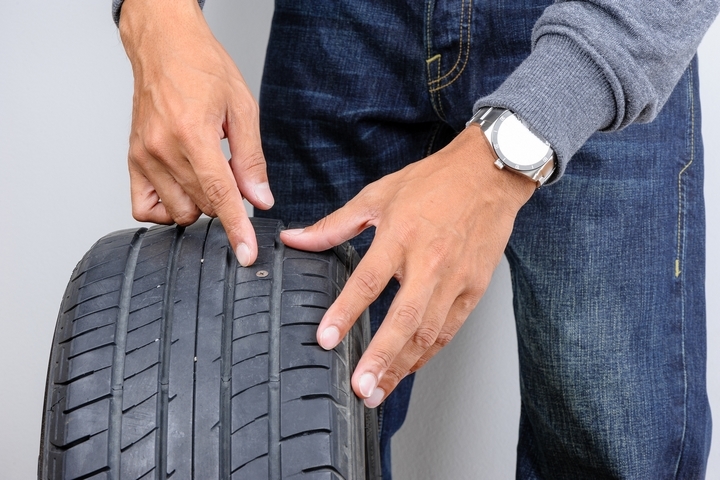Tires naturally wear out over time. They may occur because of weather conditions, driver habits, tire quality and road surfaces. When the tires are worn out, this can impact the frequency with which you’ll need to replace them.
Sometimes, it’s obvious that it’s time to replace your tires, but other times, you may need to do some investigative work. If you’ve been wondering how to tell if your tires are worn out, here are eight best tips:
1. Measure the Tires with a Depth Gauge

Measuring with a depth gauge is a great way on how to tell if your tires are worn out. The depth of your tire tread is the most important tool to measure the amount of life your tires have left. The most reliable way to check tread depth is to use a gauge, which can be purchased at your local hardware or car parts store.
Simply press the base plate of the gauge until it is flush with your tire tread, inserting the pin between the grooves of the tread. The measurement will appear at the top of the gauge. Repeat this measurement process in at least four locations on each tire; the lowest reading is the overall reading for each tire.
2. Grab a Nickel

If you don’t have a depth gauge to measure the tread on your tires, simply reach for a Canadian nickel. Insert the coin, head pointing down, between the treads of your tire. If the tread covers the top of the Queen’s head, you have enough tread on your tires. If not, if you can see the top of her hair on the coin, it is likely time for replacement.
3. Look for Uneven Wear in Your Tires

One of the first things to look for in a tire inspection is uneven wear. Do one or more tires appear more worn than the others? Uneven wear can happen when an alignment is overdue or overlooked. Unevenly worn tires can cause your car to pull to one side; over the long term, they can cause vibration and damage to your vehicle.
In short, check your tires for these signs of imbalance and have the underlying issue fixed. If enough tire wear has occurred, they should be replaced. You can buy new tires Toronto online easily with the appropriately sized replacements.
4. Check for Bulges and Other Abnormalities

As you inspect your tires, be sure to check the sidewalls—the outward-facing surface of your tires—for any abnormal bulges or bubbles. A bulge can indicate damage to the internal frame of the tire, allowing air pressure to reach the outer layers. Tires with a sidewall bulge need to be replaced immediately, regardless of the wear on the outer surface.
5. Inspect for Other Signs of Damage

Another sign of damage that is often overlooked is dry rot. If your tires are covered with small cracks, the rubber in them may be breaking down due to dry rot.
Make sure you have these tires inspected at a garage, as tires with dry rot can deteriorate quickly and can even cause the tire to separate from the steel belt. Dry rot is more common in tires that are exposed to direct sunlight; degreasing them can be helpful for prevention.
6. Keep Track of the Years

Even if you travel very little, even if you keep an eye on the tread level of your tires and they appear to be in good shape, you should still be prepared to replace your tires every six years.
Keeping track of the years as a rough guideline will remind you to have your tires inspected and to save for their replacement.
7. Keep an Eye on Tire Pressure

Experts agree that tire safety is an important part of road safety in general. Part of looking after the health of your tires means making sure they have adequate pressure. Even if your vehicle has been sitting in your garage, its tires deflate over time.
The recommendations for your tire pressure are likely listed on labels attached to your glove box or the interior of your trunk. Being familiar with your tire pressure will help you know if you have a puncture or a slow leak—some of these issues can be repaired, while others will require replacement.
8. Ask Around

If you have been told by a mechanic or auto shop that your tires need replacing, make sure you take your own measurements and conduct your own inspections before accepting the advice. If you are provided with a quote per tire, make sure you ask around for competitive rates. There are plenty of online sources for tires that offer better rates than those typically offered by a garage.
Whether you have a summer road trip planned or you’re preparing for the winter season ahead, it’s important to inspect your tires regularly to catch any signs of damage. If you’ve been wondering how to tell if your tires are worn out, we hope these ideas give you comfort and help you make informed decisions.




